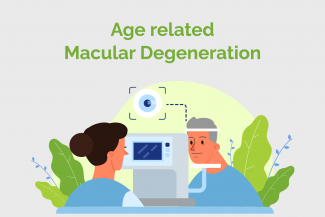
There are different tests to diagnose AMD
Ocular examination
This is the gold standard for diagnosis, where the ophthalmologist evaluates the retina after dilating the pupils to look for signs of dry or wet AMD or ARMD.
Optical coherence tomography (OCT)
is a very simple and useful test that is frequently employed to confirm the findings and also guide therapy. It provides the clinician an “optical biopsy”, allowing him to understand the structural damage to the individual layers of the retina.
Angiography
is another test which is performed to judge the presence of abnormal vessels (choroidal neovascular membrane- CNVM). It can be done both with and without venous injection of a dye, the dye less angiography (OCT-angiography) being more commonly employed these days.
Contributed by
Dr Brijesh Takkar
CRTP Fellow, IHOPE
Consultant Ophthalmologist, Vitreo Retinal Diseases
L V Prasad Eye Institute










